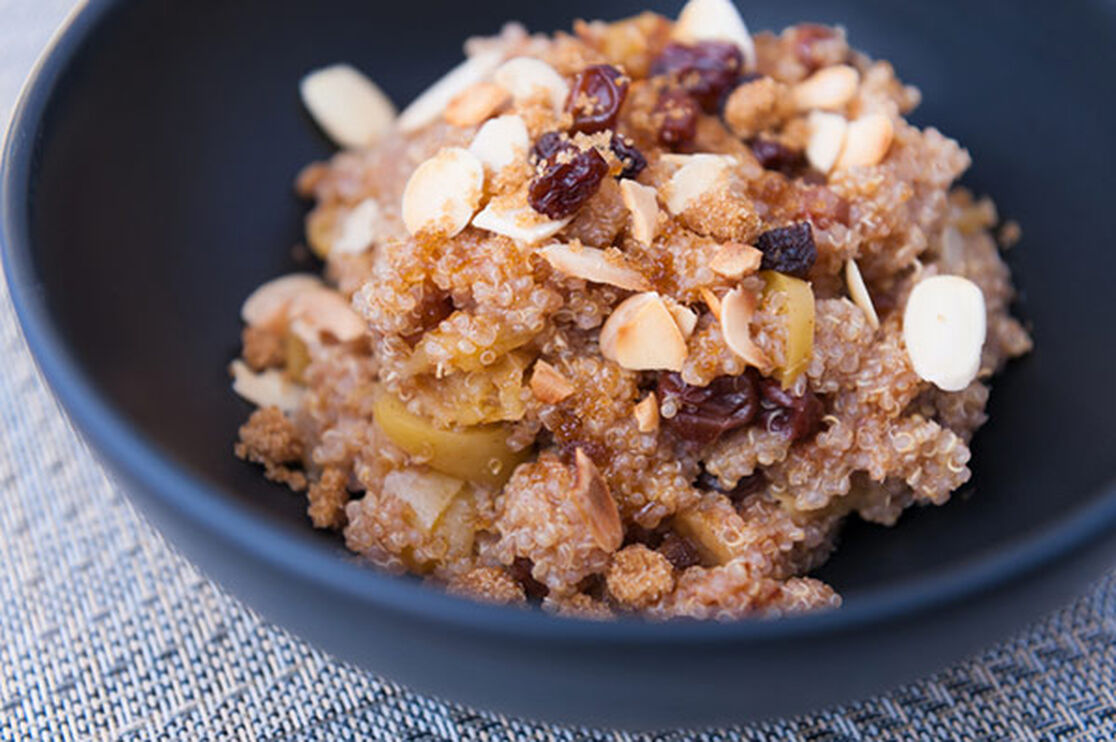Here at Honest, we’re all about helping you find healthier, safer options that feed you and your whole family. If you look at the supermarket shelves or listen in the lunchroom, you know how much the food landscape has changed: Gluten-free, dairy-free, soy-free, vegetarian, vegan, low sugar, FODMAPS (that’s Fermentable Oilgosaccharides, Disacchrides, Monosaccharides and Polyols)… the list go on! With our new series, Alternative Eats, we’re here to inform you about all the nutritious--and delicious--alternatives that fulfill your dietary needs and inspire you to think outside of the box (and whatever else you have in your pantry).
Whether it’s a preference or a medical decision, gluten-free diets have become the focus of a lot of attention. If you’re wondering why, or even what gluten is, read on for all you need to know about its origins, why people avoid it, and 8 nutritious alternatives. We’ve even included a recipe for you to taste test your newfound knowledge!
Gluten is one of the proteins found in all types of wheat--including spelt, farro, and Kamut®--rye, barley and triticale. Celiac Disease is an autoimmune disorder that affects the ability to process gluten for an estimated 1 in 100 people, according to the Celiac Disease Foundation. For these people, the body’s immune response attacks the small intestine, damaging the villi (small, fingerlike projections lining the small intestine) and affecting proper absorption of nutrients. Celiac disease is hereditary, which means that people with a first-degree relative with celiac disease (parent, child, sibling) have a 1 in 10 risk of developing it themselves.
The only treatment for folks with celiac disease is to follow a strict gluten-free diet for life. Even if you don’t have celiac disease, you may be following a gluten-free diet if you have an allergy to wheat (about 0.2-0.4% of the population) or "non-celiac gluten sensitivity." Regardless of how many of us are actually facing these issues, gluten-free versions of familiar foods have become a trend. But watch out: Just because it’s free of these ingredients doesn’t mean it’s healthier--many of these food products are still highly processed. That’s why we’re here to talk to you about grains that are a true alternative: highly nutritious and easy to integrate into everyday eating.
An Honest Guide to Gluten-Free Grains:
The days of being restricted to rice and corn are long gone--in today’s market, there are so many options to get gluten-free available, it’s hard to keep up! This handy guide offer the latest and greatest nutritious whole grains for those who need (or want) to eliminate the “g” word from their diet!
- Amaranth: An ancient grain rich in protein, calcium, iron, magnesium, phosphorus, and potassium. Interestingly, it is the only grain documented to contain vitamin C.
- Buckwheat: Technically, this isn’t a grain; it’s the seed of a fruit related to rhubarb! It’s a good source of fiber, manganese and magnesium.
- Corn: One cup of cooked yellow corn provides 5 g of protein. Another alternative is cornmeal, a combination of corn and flour seen in baked products such as pancakes, tortillas, and cornbread. Full of antioxidants, including lutein and zeaxanthin (which have been associated with eye health). It’s also a good source of thiamin, pantothenic acid, carotenoids, folate, and phosphorus.
- Millet: Another ancient grain, one cup of cooked millet contains about 8 g of protein. Rich in the minerals manganese, magnesium, and phosphorous.
- Quinoa: An ancient grain that’s become a popular replacement for starches, such as pasta, rice, couscous, and cereals. It’s a great source of manganese, magnesium, iron, copper, and phosphorous.
- Rice: Rich in carbohydrates and protein and contains B vitamins, especially thiamin, riboflavin, niacin, pantothenic acid, and vitamin B6, and the minerals calcium, iron, magnesium, manganese, phosphorous, potassium, and zinc.
- Teff: This fine ancient grain is similar in size to poppy seeds. Nutty and sweet, it can be eaten uncooked, as a cooked grain, or ground and added as part of the flour used in recipes. Teff is rich in carbohydrates, fiber, and protein and contains all eight essential amino acids. It’s chock-full of thiamin and contains significant amounts of the minerals phosphorus, magnesium, aluminum, iron, copper, zinc, boron, and barium.
- Freekeh: A type of wheat that’s harvested prematurely and roasted. It has high fiber and protein content and it’s also nutrient-rich with calcium and iron.
Now that you’ve got great gluten-free choices, we’ve got an easy Alternative Eats recipe that will get your day off to a healthy and fulfilling start!
Quinoa Porridge
Ingredients:
1 cup unsweetened almond milk
1/3 cup quinoa flakes or quinoa*
1 tablespoon vanilla extract
1/4 teaspoon cinnamon
1/4 teaspoon ginger
1/8 teaspoon nutmeg
3 to 4 dried prunes or other dried fruit, chopped
1 tablespoon maple syrup
1 tablespoon raw sliced almonds
Directions:
Bring almond milk to a boil in a pot over high heat. Add quinoa or quinoa flakes, return to a boil, and cook for 30 seconds, stirring frequently. Add vanilla, cinnamon, ginger, nutmeg, and prunes and cook another 30 seconds, continuing to stir. Remove from heat and allow to cool. Add maple syrup, mix well, and sprinkle with almonds.
*Honest Tip: You can use quinoa and cook according to package directions. Then add spices and almond milk to taste!
We aim to provide you with the most honest and credible information possible. This article was reviewed for accuracy by The Honest Team and was written based on sources that are linked at the bottom of the article.
blog_review_statement



